Related Research Articles
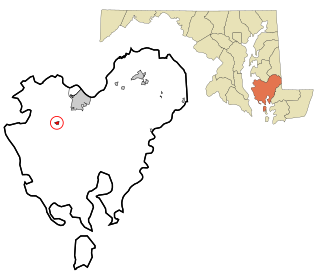
Church Creek is a town in Dorchester County, Maryland, United States, part of the state's Eastern Shore. The population was 125 at the 2010 census. Church Creek is located approximately six miles south of Cambridge.
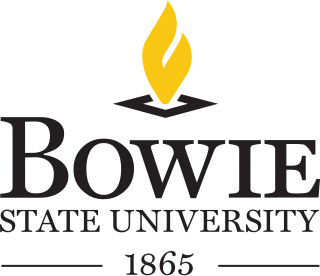
Bowie State University is a public historically black university in Prince George's County, Maryland, north of Bowie. It is part of the University System of Maryland. Founded in 1865, Bowie State is Maryland's oldest historically black university and one of the ten oldest in the country. Bowie State is a member-school of the Thurgood Marshall College Fund.
John Frederick Weishampel Jr. was an American printer and publisher based at 484 West Baltimore Street in Baltimore. Weishampel was a third-generation Prussian-American and son of Rev. John Frederick Weishampel.
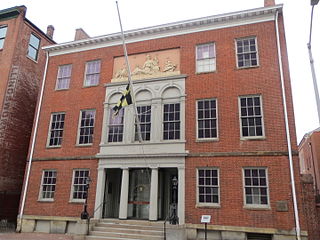
The Peale is a community museum in Baltimore, Maryland, which opened in 2022. It occupies the first building in the Western Hemisphere to be designed and built specifically as a museum.

J. R. Clifford was West Virginia's first African-American attorney. Clifford was also a newspaper publisher, editor and writer, school teacher, and principal. He was a Civil War veteran, grandfather, as well as a civil rights pioneer and founding member of the Niagara Movement. Despite boundaries derived from racial discrimination, Clifford's accomplishments were great, reflecting his ability and determination.

Enolia Pettigen McMillan was an American educator, civil rights activist, and community leader. She was the first female national president of the NAACP.
Desegregation of the Baltimore City Public Schools took place in 1956 after the United States Supreme Court ruled, in the case of Brown v. Board of Education, that segregation in schools went against constitutional law. Desegregation of U.S. schools was part of the civil rights movement. The events that followed desegregation in Baltimore, were important to the civil rights movement across America. Recent scholarship has identified Baltimore's desegregation as an important precursor to the Greensboro sit-ins.

Wilson Park is a small community in northeast Baltimore, Maryland and one of the first African-American communities in the city. Its bounded on the south by 43rd Street and the east by The Alameda. Two community associations serve the area: the Kimberleigh Road Community Association and the Wilson Park Improvement Association. The homes range from large single-family homes to semi-detached and townhouses. A majority of homes are owner-occupied.

Eastern High School, established in 1844 along with its sister school Western High School, was a historic all-female, public high school located in Baltimore City, Maryland, 21218, U.S.A. Its final building, at 1101 East 33rd Street, is to the west of The Baltimore City College, also at 33rd Street, and across the street from the former site of Memorial Stadium. E.H.S. was operated by the Baltimore City Public Schools system at successive locations until it was closed in 1986. The final building was renovated in the 1990s and is currently owned and used for offices by the Johns Hopkins Medical Institutions. It was listed on the National Register of Historic Places in 2000.

Baltimore City Public Schools (BCPS), also referred to as Baltimore City Public School System (BCPSS) or City Schools, is a public school district in the city of Baltimore, state of Maryland, United States. It serves the youth of Baltimore City. Traditionally, however, the Baltimore City Public Schools system has not referred to itself as a "district," as the operation of the schools was synonymous with the city of Baltimore. Its headquarters are located on 200 East North Avenue at North Calvert Street in the Dr. Alice G. Pinderhughes Administration Building.
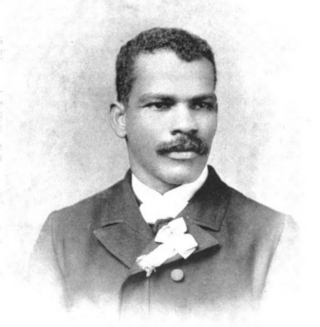
Ernest A. Lyon was an African-American minister, educator and diplomat.
The following is a timeline of the history of the city of Baltimore, Maryland, USA.
The history of African Americans in Maryland is long and complex. Southern Maryland is the home of the first person of African descent to be elected to and serve in a legislature in America. His name was Mathias de Sousa and he was one of the original colonists to arrive in 1634. Southern Maryland is also the place where Josiah Henson was enslaved, and the place of brutality he wrote about in his later autobiography, which became the basis for Harriet Beecher Stowe's "Uncle Tom's Cabin".

Paul Samuel Henderson was an African-American photojournalist for the Baltimore Afro-American newspaper from 1929 through c. 1960. He became well known for taking pictures of large groups and distant objects atop a ladder he carried. Henderson primarily photographed people, including church groups, politicians, graduations, local college and university groups, weddings, events during the Civil Rights Movement, and more. He was a member of the National Association for the Advancement of Colored People, a vestryman at St. James Church, charter member of the Druid Hill Avenue Neighborhood Club, assistant treasurer of a local Frontiers International club, and supported The Salvation Army.

George Freeman Bragg was an African-American priest, journalist, social activist and historian. The twelfth African American ordained as a priest in the Episcopal Church of the United States, he worked against racial discrimination and for interracial harmony, both within and outside of his church.
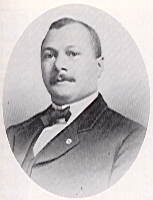
Harry Sythe Cummings was a lawyer, fraternal leader, and the first African American Councilman of Baltimore City. Born to Henry and Eliza Cummings in 1866, he was the second eldest of eight children. Due to the lack of educational opportunities in Baltimore, Cummings attended Lincoln University where he received his bachelor's degree. He later attended University of Maryland School of Law where he became one the first African Americans to graduate from the program in 1889. During his notable career, Harry Cummings founded the 1st Manuel Training School for Colored Youth in Baltimore City which at the time was named Colored Polytechnic Institute. His political vocation, was not limited to Baltimore. In 1904, Cummings delivered a speech at the Republican National Convention endorsing the presidency of Theodore Roosevelt.
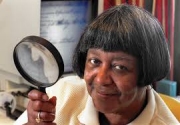
Agnes Kane Callum was a genealogist known for her research into Maryland's African-American history. She was a founding member of the Baltimore Afro-American Historical and Genealogical Society, a frequent columnist for The Catholic Review, and the founding editor of a black genealogical journal, Flower of the Forest. Callum was inducted into the Maryland Women's Hall of Fame in 2014.

The history of African Americans in Baltimore dates back to the 17th century when the first African slaves were being brought to the Province of Maryland. Majority white for most of its history, Baltimore transitioned to having a black majority in the 1970s. As of the 2010 Census, African Americans are the majority population of Baltimore at 63% of the population. As a majority black city for the last several decades with the 5th largest population of African Americans of any city in the United States, African Americans have had an enormous impact on the culture, dialect, history, politics, and music of the city. Unlike many other Northern cities whose African-American populations first became well-established during the Great Migration, Baltimore has a deeply rooted African-American heritage, being home to the largest population of free black people half a century before the Emancipation Proclamation. The migrations of Southern and Appalachian African Americans between 1910 and 1970 brought thousands of African Americans to Baltimore, transforming the city into the second northernmost majority-black city in the United States after Detroit. The city's African-American community is centered in West Baltimore and East Baltimore. The distribution of African Americans on both the West and the East sides of Baltimore is sometimes called "The Black Butterfly", while the distribution of white Americans in Central and Southeast Baltimore is called "The White L."

Noah Davis was a Baptist minister, who was a former enslaved person that purchased his and his family members' freedom. He established the Second Colored Baptist Church in Baltimore. He spoke at lectures in the north and published A Narrative of the Life of Rev. Noah Davis, a Colored Man to raise money to free his wife and children.

Margaret Briggs Gregory Hawkins, worked as a schoolteacher and later became known for her activism on behalf of African Americans and women. She was inducted into the Maryland Women's Hall of Fame in 2021.
References
- ↑ First Annual Report of the Baltimore Association, for the Moral and Educational Improvement of the Colored People. 1865.
- 1 2 3 "Male and Female Colored School No. 1 at the Peale – The Peale Center". The Peale Center. Retrieved 22 January 2021.
- 1 2 Rhoads, Samuel; Lewis, Enoch (1866). Friends' Review: A Religious, Literary and Miscellaneous Journal. J. Tatum. Retrieved 22 January 2021.
- ↑ Weishampel, John F. (1866). The Stranger in Baltimore: A New Hand Book, Containing Sketches of the Early History and Present Condition of Baltimore, with a Description of Its Notable Localities, and Other Information. J. F. Weishampel, jr.